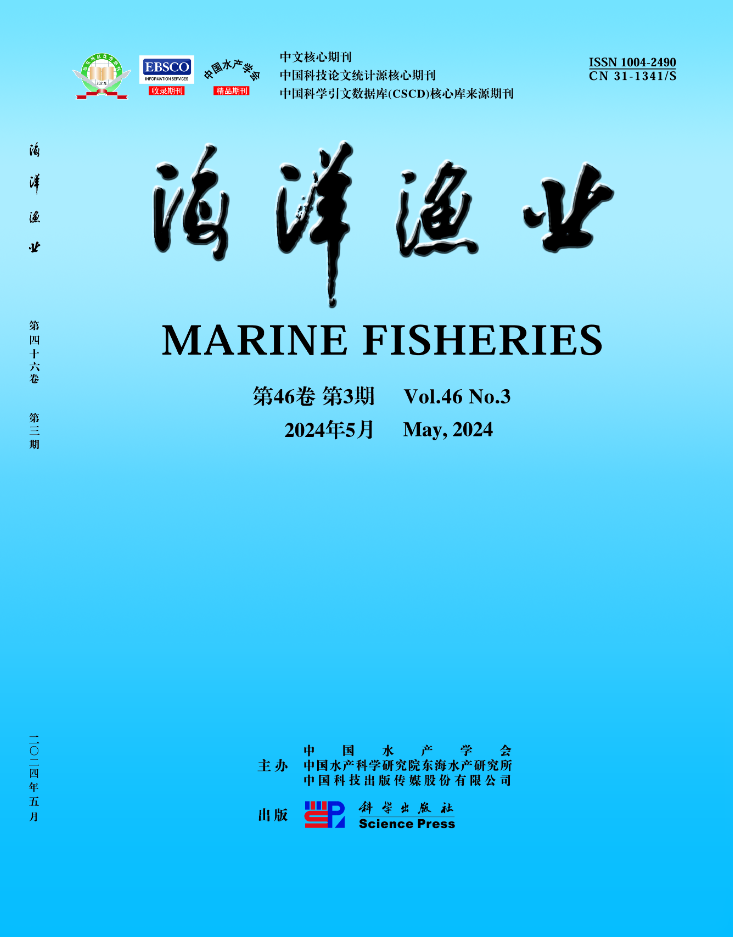金枪鱼的空间和时间分布(Thunnus)在基于地理信息系统的苏门答腊西部水域
引用次数: 0
摘要
一个可以用来可视化和连接各种类型的时空分布的工具是地理信息系统。本研究的目的是分析2013年延绳钓渔业活动期间金枪鱼的压力、捕捞量和捕捞努力量,并对金枪鱼的时空分布进行建模。采用实验方法确定像素大小和核形状。显示最佳结果的内核形式是四次的。由公式0.68n-0.2产生的最佳半径为0.25度(27.78公里)。CPUE使用捕获密度(尾场)和钓线密度(鱼钩场数)的栅格数据。计算方法是将栅格鱼尾的密度乘以1000,然后除以栅格鱼钩的密度。结果表明,CPUE的取值范围为0.833 ~ 416。总渔获努力量总面积为161,520 km2,每1,000鱼钩的渔获努力量为57,502.017。在38,080 km2范围内,CPUE顶部热图总数为38,948.29只/ 1,000钩,大部分分布在明打威海峡,其他部分也分布在西比路岛以南、英加诺岛以西至印度洋。季节格局表明,明打威海峡东部季节是捕渔力最高的季节,西西伯利亚海峡至西西伯利亚岛南部季节是捕渔力最低的季节。关键词:时空分布,金枪鱼密度,CPUE,热图,印度洋本文章由计算机程序翻译,如有差异,请以英文原文为准。
DISTRIBUSI SPASIAL DAN TEMPORAL IKAN TUNA (Thunnus sp) DI PERAIRAN BARAT SUMATERA BERBASIS SISTEM INFORMASI GEOGRAFIS
One tool that can be used to visualize and connect various types of spatial and temporal distribution is Geographic Information System. The purpose of this study is to analyze the pressure of longline fisheries, tuna catches and fishing effort and can model the spatial distribution and temporal (of tuna, during longline fishery activities in 2013. Experimental methods are used in determining the size pixels and kernel shape. The form of the kernel that displays the best results is quartic. The optimal radius produced from the equation 0.68n-0.2 is 0.25 degrees (27.78 km). The CPUE uses raster data on catch density (tail field) and fishing line density (field number of hooks). The calculation is done by multiplying the density of the raster catch (tail) by 1,000 then divided by the density of the raster fishing hooks. The results show that the range of CPUE values ranged from 0.833 - 416. The total area of the total fishing effort was 161,520 km2 with an ffort of catching of 57,502.017 per 1,000 hooks. The total number of CPUE top heatmap is 38,948.29 per 1,000 hooks in 38,080 km2, most are in the Mentawai Strait, other parts are also found in the south of Siberut Island, west of Enggano Island to the Indian Ocean. Seasonal patterns show that the East season is the season with the highest catching effort in the Mentawai Strait, the Siberut Strait to the southern part of Siberut Island and the Transition I season is the lowest catching effort.
Keywords: Spatial and temporal distribution, tuna density, CPUE, heatmap, Indian Ocean
求助全文
通过发布文献求助,成功后即可免费获取论文全文。
去求助
来源期刊
自引率
0.00%
发文量
4336
期刊介绍:
“Marine Fisheries”started publication in 1979, it mainly covers original research papers and reviews on basic theories and applications of aquaculture and fisheries, including marine biology, mariculture and reproduction, aquatic diseases and prevention, nutrition and feed of aquatic organisms, fishery ecology and environmental protection, development and conservation of marine fishery resources, fishing tools and methods, preservation and comprehensive utilization of aquatic products, fishery machinery and instruments.

 求助内容:
求助内容: 应助结果提醒方式:
应助结果提醒方式:


